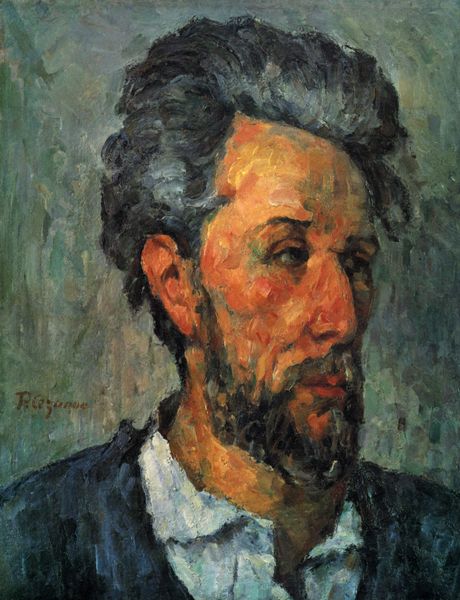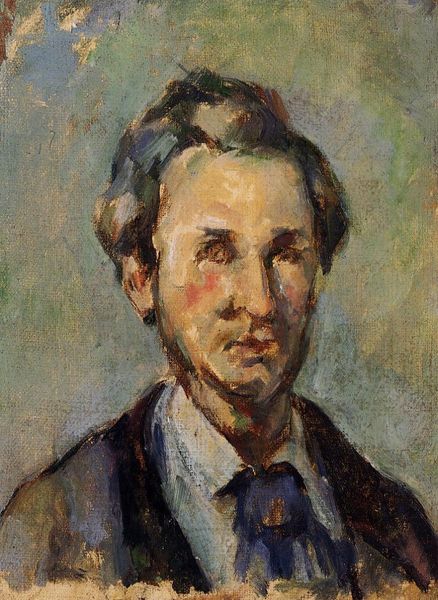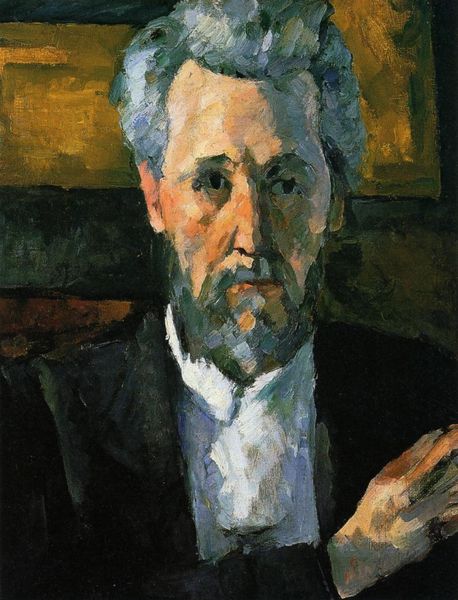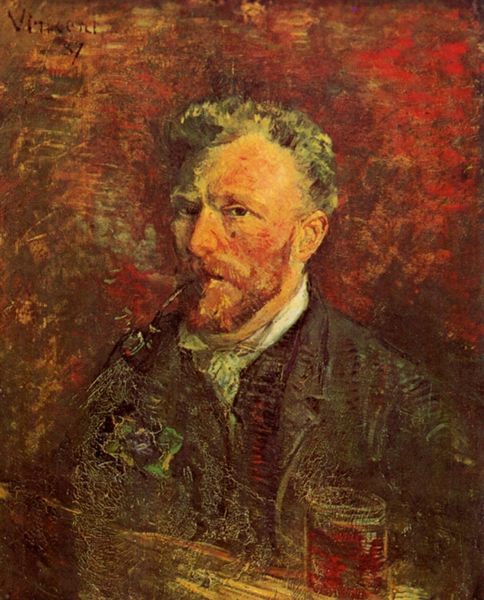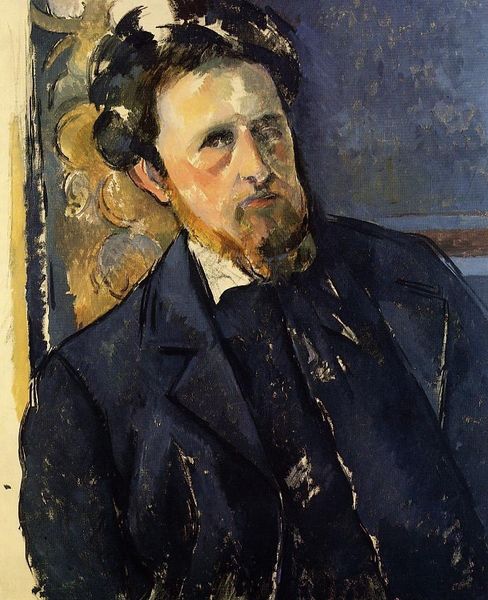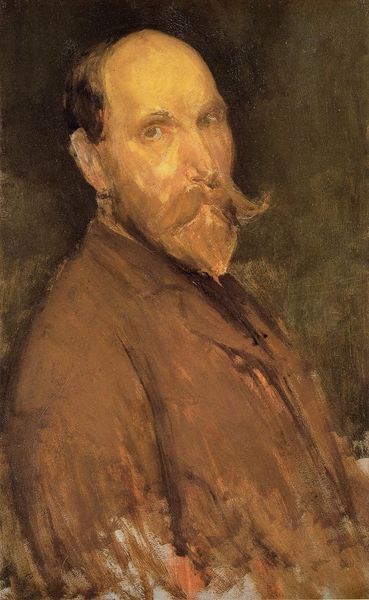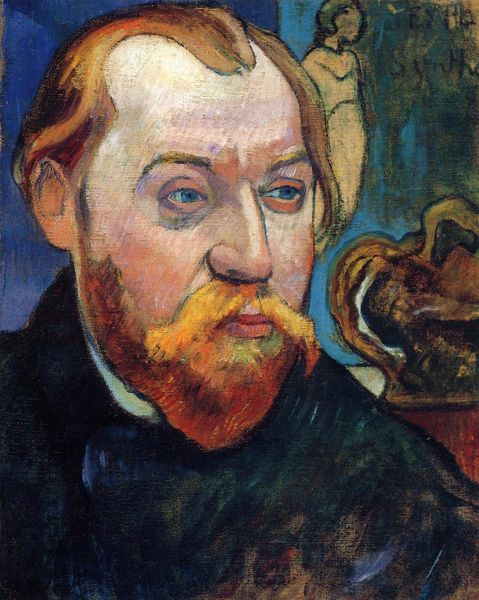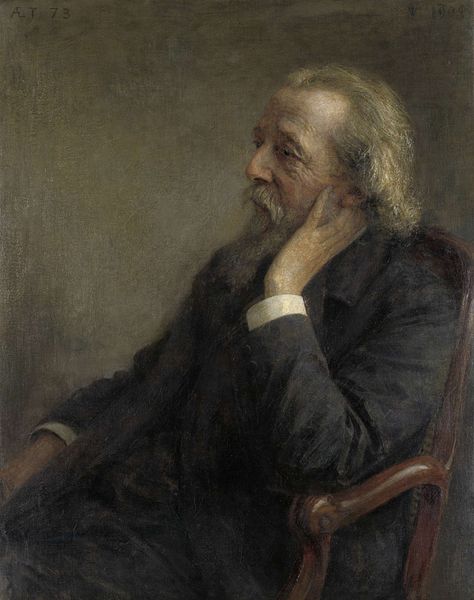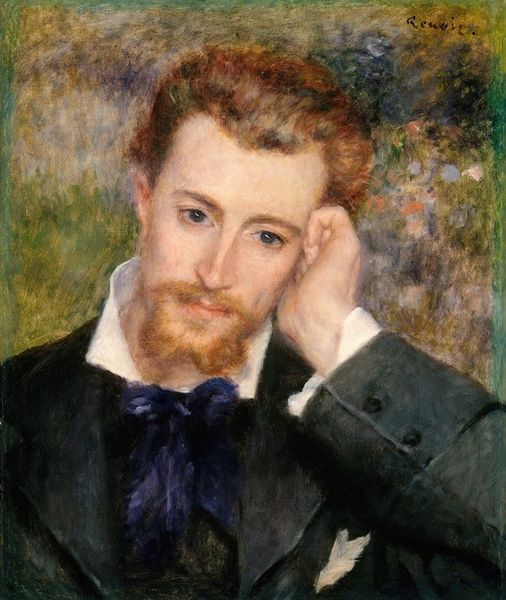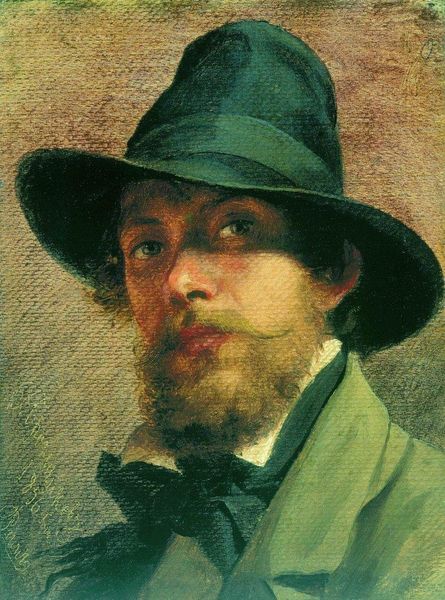
painting, oil-paint
#
portrait
#
painting
#
impressionism
#
oil-paint
#
figuration
#
oil painting
#
intimism
#
realism
Dimensions: 46 x 36 cm
Copyright: Public domain
Editor: This is Renoir's "Victor Chocquet," painted in 1876 using oil paint. I find it captivating; there’s an intimacy and a psychological depth that draws me in. What do you see in this piece? Curator: I see a carefully constructed image embedded in the politics of taste. Chocquet was one of the first and most avid collectors of Impressionist art, at a time when the French Salon and much of the public reviled it. Renoir, struggling for recognition, strategically painted Chocquet to validate both the sitter and the style. Note how Renoir depicts Chocquet amidst patterned wallpaper, seemingly dissolving form – an assertive presentation of modern taste and wealth at the time. How does knowing Chocquet’s role as a collector influence your understanding of this portrait? Editor: It definitely adds another layer. So Renoir wasn't just painting a man, he was making a statement about the value of a certain kind of art and the people who appreciated it? Curator: Precisely. It becomes a commentary on the emerging art market, the shift in power from the traditional Salon system, and the rise of private collectors in shaping artistic success. The painting isn't merely a likeness; it’s an active participant in legitimizing Impressionism. Editor: That's fascinating. I hadn’t considered the power dynamics at play here. It makes me look at all portraits differently now, thinking about whose agenda they might be serving. Curator: It also begs us to consider where the painting resides now. It hangs in a foundation assembled by yet another collector of a later generation. Aren’t museums just stages in the history of taste? Editor: Wow, so much to consider. Thanks for this insightful perspective! I'll never look at portraits the same way again.
Comments
No comments
Be the first to comment and join the conversation on the ultimate creative platform.



